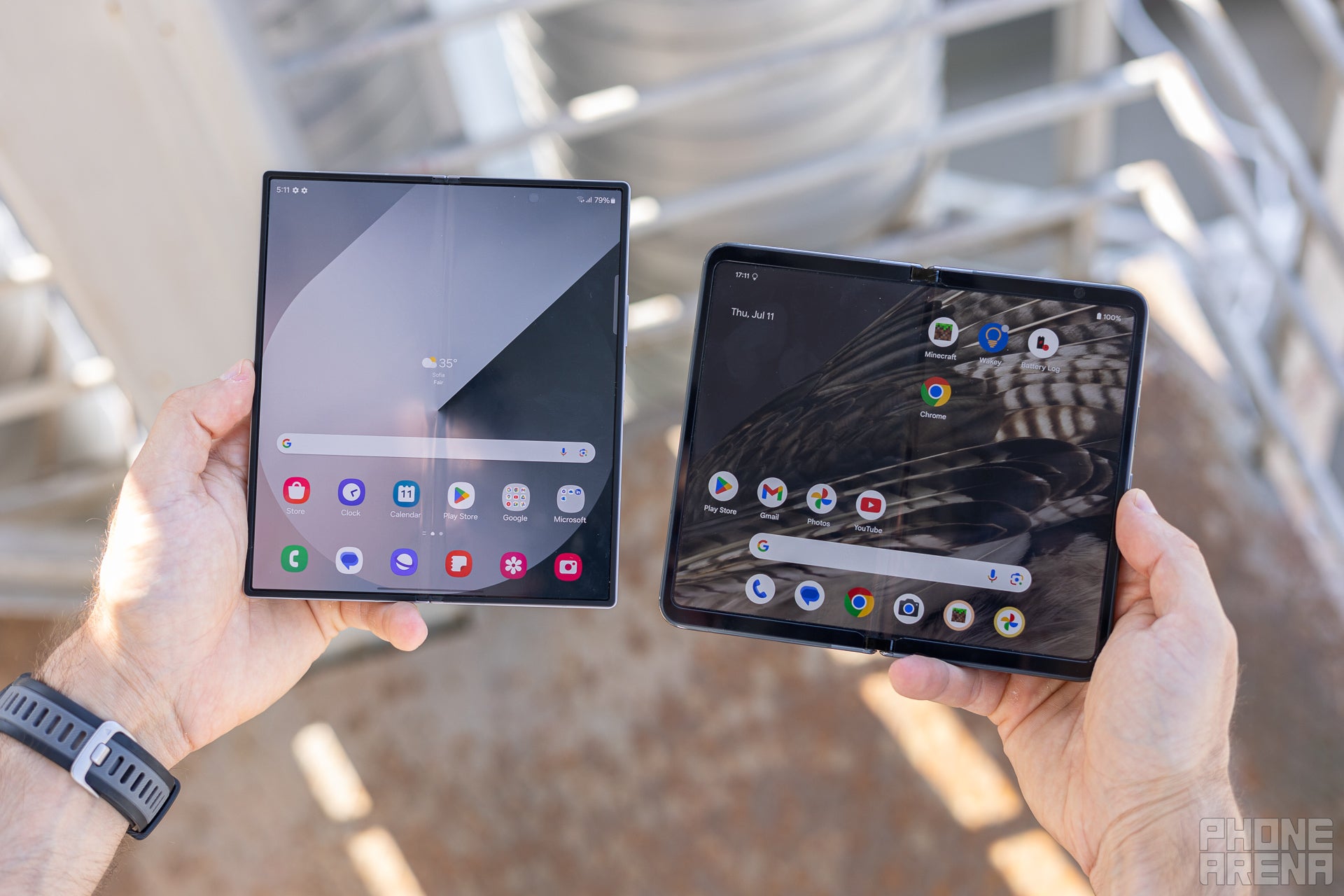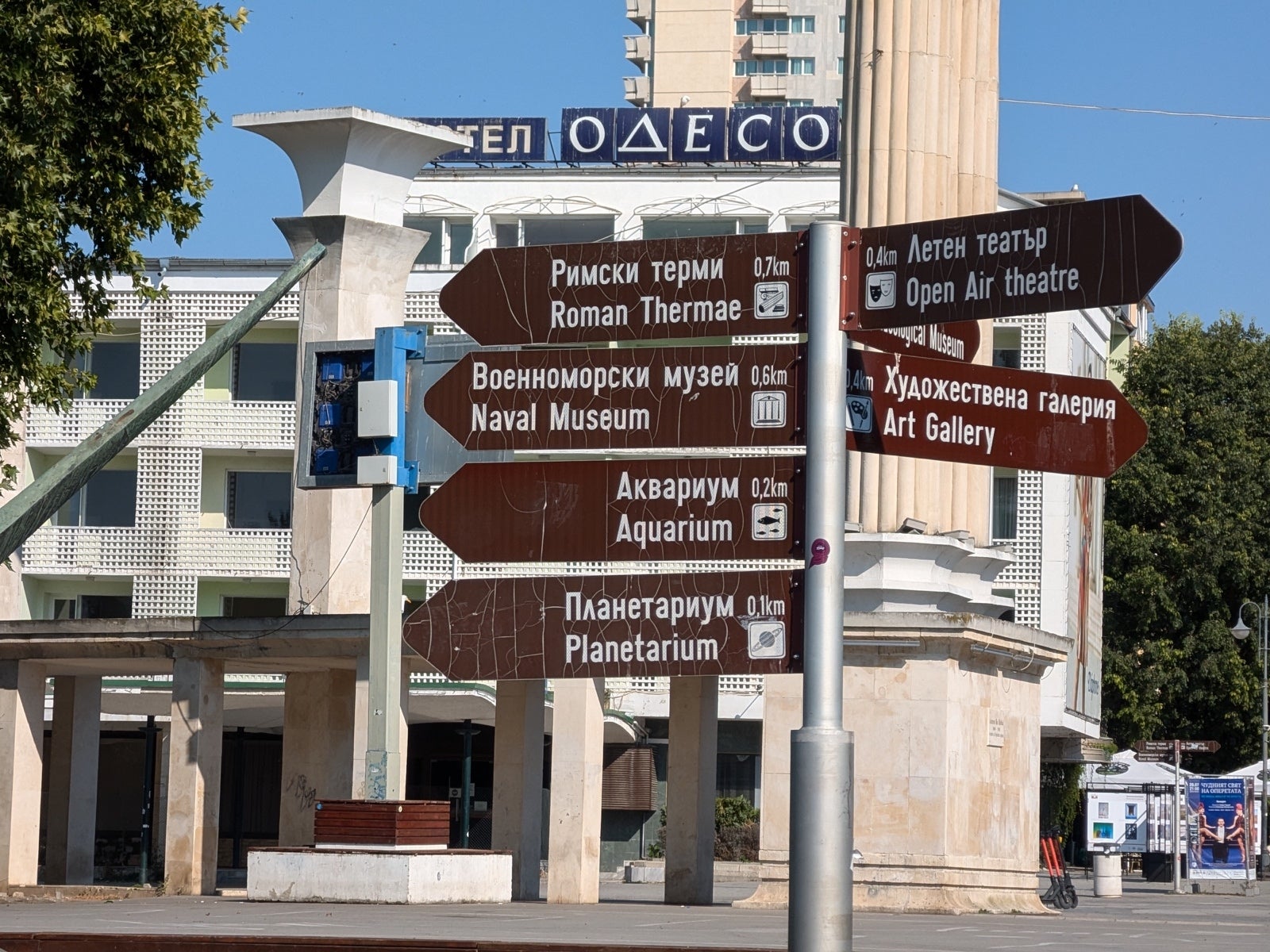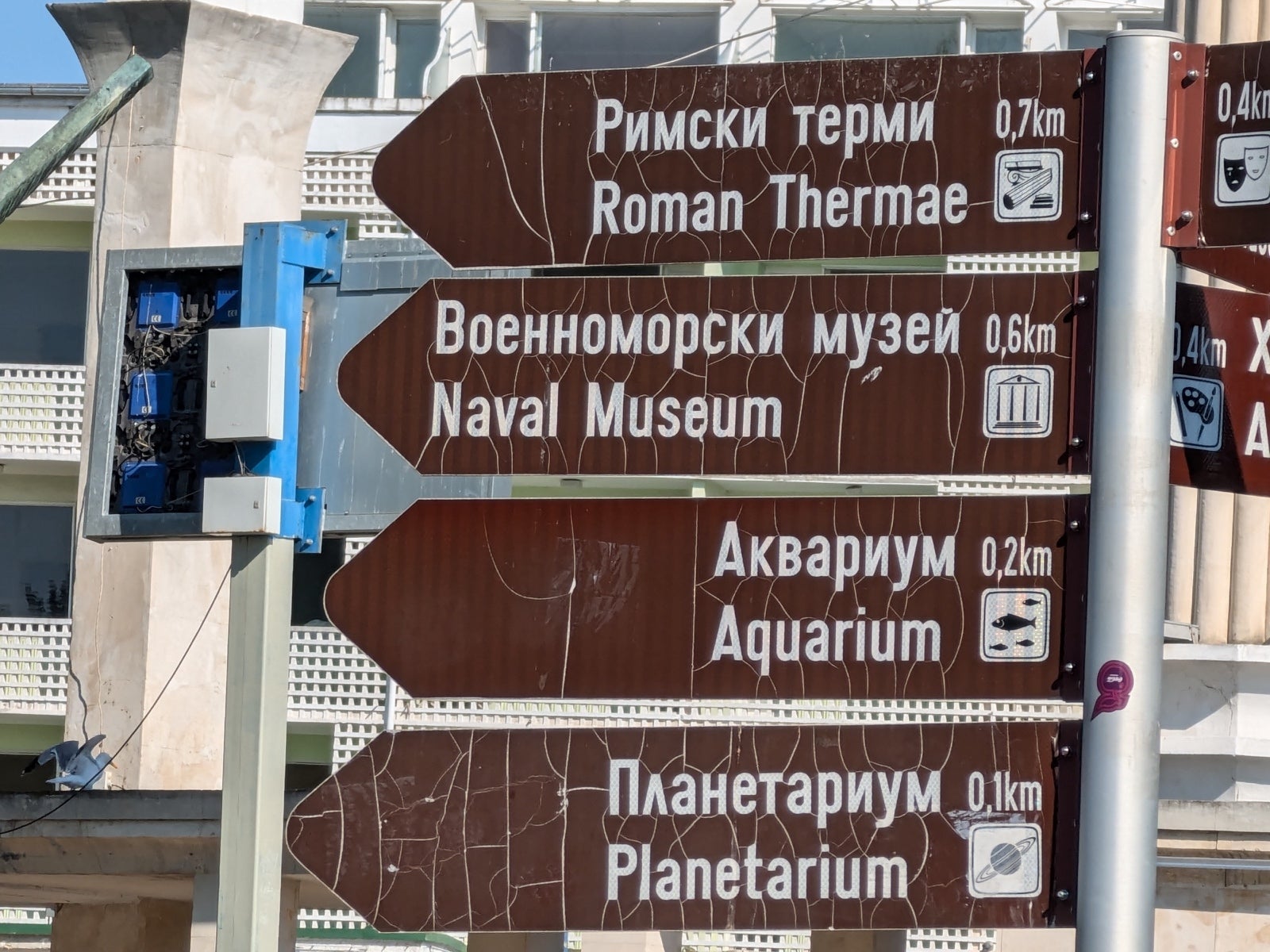Samsung Galaxy Z Fold 6 vs Google Pixel Fold: High-level bout
We may earn a commission if you make a purchase from the links on this page.

Intro
Samsung just refreshed its foldable lineup with the new Galaxy Z Fold 6, which honestly doesn't fall too far from the proverbial tree. Long story short, it is mostly similar to previous Galaxy Z Fold devices. This isn't bad, however: for nearly half a decade now, the Galaxy Z Fold lineup has been the one to consider if you were willing to have the latest bleeding-edge foldable tech.
However, in the past few years, numerous challengers have risen, one of which is the Google Pixel Fold. The search giant's first attempt at a foldable phone surely had some squeaky wheels, but was generally well-received. Google is most certainly cooking up a successor, but right now, the Pixel Fold is the one to beat.
How does the new Galaxy Z Fold 6 compare against the Google Pixel Fold?
Galaxy Z Fold 6 vs Google Pixel Fold differences:
| Galaxy Z Fold 6 | Google Pixel Fold |
|---|---|
| A slight redesign with thinner bezels, a moer squarish aspect ratio | Slimmer but wider device with a strong hinge, also heavier |
| The same camera system as before (50MP+10MP+12MP), likely software upgrades | Triple 48MP camera with tons of AI features and functions |
| The finest Qualcomm chip on board (Snapdragon 8 Gen 3) | Google Tensor G2 chip, the same as the Pixel 7 series |
| Smaller 4,400mAh battery on board | Larger 4,821mAh battery on deck |
| Faster 25W wired and 15W wireless charging | Slower 21W wired and 7.5W wireless charging |
Table of Contents:
Read more:
- Galaxy Z Fold 6 release date predictions, price, specs, and must-know features
- Google Pixel Fold Review: finally, a folding phone you can enjoy using even without unfolding
- Samsung Galaxy Z Fold 6 vs Galaxy S24 Ultra: Key differences to expect
- Google Pixel 9 Pro Fold vs Samsung Galaxy Z Fold 6: here comes the rivalry!
Design and Size
Large and heavy, meet slim and tall

The Galaxy Z Fold 6 surely boasts a lovely design (Image by PhoneArena)
The Pixel Fold is a foldable that's a bit wider than other foldable phones, which makes it extremely usable even when it's folded. Yes, you can rely on the Pixel Fold in your day-to-day tasks without ever unfolding it, as its cover display is actually useful, unlike the regular foldables that are too narrow. Hint: most previous Galaxy Z Fold models have been this way. The Pixel Fold is also thinner than Samsung's current Galaxy Z Fold, let's see if this will be true for the next generation.
The Galaxy Z Fold 6 is both lighter and thinner than its predecessor. Although Samsung hasn't used titanium as we had hoped, the overall weight of the Galaxy Z Fold 6 has dropped to 239gr, some 14 and 24gr lighter than the Galaxy Z Fold 5 and Galaxy Z Fold 4, respectively.
- Also read: Galaxy Z Fold 6: Size Comparison

Thin and light, Samsung's foldable stands out (Image by PhoneArena)
A notable change with the phone is the slightly different aspect ratio in contrast with its predecessor. The Galaxy Z Fold 6 adopts a boxier design thanks to a more squarish aspect ratio, making the phone more utilitarian, somewhat similar to the Pixel Fold.
However, in pure dimensions gained, we are looking at very minor differences. Folded, the phone is 68.1mm wide, just 1mm wider than the Z Fold 5, which isn't enough to guarantee a much better user experience. The Pixel Fold, in comparison, is 79.5mm wide, which makes it that much more usable when folded.

All the usual ports in all the usual places (Image by PhoneArena)
Colors-wise, the Galaxy Z Fold 6 is available in Navy, Silver Shadow, and Pink, while Crafted Black and White will be exclusively available on Samsung.com.
The Galaxy Z Fold 6 also supports Samsung's S Pen (sold separately). It comes with IP48 dust and water resistance, meaning that it is protected against larger particles and fully waterproof. The Pixel Fold doesn't have stylus support; it also has merely IPX8 water-resistance, which means that it's not dustproof.
Display Differences

Now those are some great displays! (Image by PhoneArena)
In terms of display, the Pixel Fold comes along with a large and beautiful 7.6-inch inner display. That's where most of the positive aspects of it end, though. Firstly, the Pixel Fold has a peculiar quirk that makes it unable to fully unfold to a 180-degree state, but remains ever-so-slightly folded.
Secondly, there's also a very pronounced display crease. Thirdly, the enormous inner bezels aren't looking great either. Fourthly, this display is extremely prone to scratches––even fingerprints might leave permanent marks on it. Finally, the internal screen is quite reflective, so you might often have a challenging time as far as outdoor legibility goes.
Samsung says it has "improved the crease", but in our experience, this doesn't seem to be the case.
As we mentioned, the Galaxy Z Fold 6 scores new aspect ratios: it's 20.9:18 for the internal screen and 22.1:9 for the external one. For reference, the Galaxy Z Fold 5 has an outer screen with a 21.6:18 aspect ratio, while the inner one is 23.1:9. Of course, both displays are Dynamic AMOLED ones, with dynamic refresh rate that jumps between 1 and 120Hz depending on screen content.
As we mentioned, the Galaxy Z Fold 6 scores new aspect ratios: it's 20.9:18 for the internal screen and 22.1:9 for the external one. For reference, the Galaxy Z Fold 5 has an outer screen with a 21.6:18 aspect ratio, while the inner one is 23.1:9. Of course, both displays are Dynamic AMOLED ones, with dynamic refresh rate that jumps between 1 and 120Hz depending on screen content.
What's the difference between the displays of both phones?
As per our own benchmark tests, the inner screen of the Galaxy Z Fold 6 scores a much higher maximum brightness, nearly 1450 nits, which is much higher than the Pixel Fold's sub-1,000 nits of max brightness. The Galaxy Z Fold 6 has a lower, 1-nit brightness in comparison with the Pixel Fold.
Performance and Software
Qualcomm Snapdragon 8 Gen 3 vs Tensor G2

It's the Fold's world, we're just living in it (Image by PhoneArena)
This means that the Galaxy Z Fold 6 will only stretch Samsung's lead. Of course, in real life, the difference might not be so drastic, but for future-proofness' sake, the Galaxy Z Fold 6 should be the more sensible purchase.
In terms of graphics and gaming performance, it's almost a certain that the Galaxy Z Fold 6 will have an edge over its Google-made competitor. The Pixel Fold tends to easily overheat during gaming and eventually throttle down, leading to stuttery performance, so the bar is set quite low for the Samsung foldable.
Performance Benchmarks:
In terms of graphics and gaming performance, it's almost a certain that the Galaxy Z Fold 6 will have an edge over its Google-made competitor. The Pixel Fold tends to easily overheat during gaming and eventually throttle down, leading to stuttery performance, so the bar is set quite low for the Samsung foldable.
Performance-wise, the Galaxy Z Fold 6 grabs the victory here. It surpasses the Pixel Fold in all synthetic benchmark tests.
Storage and memory-wise, the Pixel Fold comes along with 12GB of RAM, as well as 256GB and 512GB storage versions. The Galaxy Z Fold 6 also comes with 12GB of RAM, too, as well as 256GB, 512GB and 1TB storage versions.
As far as software goes, the Galaxy Z Fold 6 comes along with Android 14 and One UI, with tons of Galaxy AI features sprinkled on top. We've already summarized these; in a nutshell, the foldable Samsung phone will come with enhanced personalized summaries, which will be an improved version of the current Galaxy AI text summary.
The difference with this upgraded version is that the user will be able to tell the AI whether they want the summary to have a neutral tone, a negative one, or a positive one. These tonality directions can be combined with length as well. You could ask Galaxy AI to give you a summary in a long and with a negative tone or a short and neutral tone.
There are also Note Assist, Browsing Assist, Transcript Assist, and Photo Assist on board, a selection of AI-powered user aids.
As far as software goes, the Galaxy Z Fold 6 comes along with Android 14 and One UI, with tons of Galaxy AI features sprinkled on top. We've already summarized these; in a nutshell, the foldable Samsung phone will come with enhanced personalized summaries, which will be an improved version of the current Galaxy AI text summary.
The difference with this upgraded version is that the user will be able to tell the AI whether they want the summary to have a neutral tone, a negative one, or a positive one. These tonality directions can be combined with length as well. You could ask Galaxy AI to give you a summary in a long and with a negative tone or a short and neutral tone.
There are also Note Assist, Browsing Assist, Transcript Assist, and Photo Assist on board, a selection of AI-powered user aids.
What's more impressive, however, is the software support on either of these two foldable phones. We get seven years of software support on both devices, which is superb! This means the Pixel Fold will receive major OS upgrades and security patches until 2030, while the Galaxy Z Fold 6 will be supported until summer 2031, which sounds great for potential adopters.
Camera
Yep, they got cameras

Two nearly identical triple-camera setups, but is there a big difference? (Image by PhoneArena)
The Pixel Fold has a rather capable camera system, just like any recent Pixel phone. It's very capable, but slightly inferior compared to the Pixel 7 Pro and Pixel 8 Pro. That's because while similar, the camera setup utilizes slightly smaller sensors, so image quality, especially at night, is not as spectacular. The Pixel Fold comes along with:
- 48MP primary camera with f/1.7 aperture and OIS;
- 10.8MP secondary 5X telephoto camera with f/3.0 aperture;
- 10.8MP ultra-wide camera with f/2.2 aperture.
On the other hand, Samsung mostly reuses the same camera setup that came along with both the Galaxy Z Fold 4 and the Galaxy Z Fold 5. We say mostly because the ultra-wide camera is reportedly boasting some new hardware, although its specs are the same as before.
- 50MP primary camera with f/1.8 aperture and OIS;
- 10MP secondary 3X telephoto camera with f/2.4 aperture and OIS;
- 12MP ultra-wide camera with f/2.2 aperture.
What about the image quality?
Main Camera
In broad daylight, there are some notable differences between the two phones. The Pixel Fold takes slightly colder photos with more pronounced details. The Galaxy Z Fold 6, on the other hand, is producing photos with a greener tint, as well as slightly fewer details.
At night, we'd say both phones are mostly on par when it comes to low-light image performance. The Galaxy Z Fold 6 has a slight upper hand here, as it delivers livelier colors. It also does a much better job at capturing detail in the darker areas of the image, like the pines in the foreground.
Zoom Quality
Onto the zoom cameras, the Galaxy Z Fold 6 does a better job at 3X, which is completely logical. After all, it has a dedicated 3X telephoto camera, while the Pixel Fold boasts a 5X telephoto.
At 5X, which is the Pixel's native zoom, Google's foldable does a slightly better job at resolving details. The Galaxy Z Fold 6 holds it ground surprisingly well, however, which is great to hear. Still, the Pixel Fold is better at 5X zoom.
At 10X zoom, the Pixel Fold is still the phone to beat, as the Galaxy Z Fold 6 resorts to oversharpening, which leads to hazy detail resolution.
Ultra-wide Camera
The ultra-wide on the Galaxy Z Fold 6 produces more vibrant and eye-pleasing photos, which will definitely appeal more to the masses. On the other hand, the Pixel Fold captures a much more natural scene here.
Selfies
When it comes to selfies, the Galaxy Z Fold 6 does a better job at capturing a more detailed and pleasing selfie, with lovely colors and a decent amount of detail. At the same time, the Pixel delivers a more realistic image.
Audio Quality and Haptics
The speakers on the Pixel Fold are bigger and better than those on the Pixel 7 Pro, but it's not a big change in quality. Haptic feedback is accurate, but could be a bit weak in certain situations.
The Galaxy Z Fold 6 delivers excellent sound quality and is just lovely to listen to music on. Typical for Samsung, we also get strong and accurate haptic feedback that makes it rather challenging to miss an incoming call or an alarm.
Battery Life and Charging

The Pixel Fold comes along with a 4,821mAh battery, which is relatively large for a foldable phone. In our experience, Google's foldable easily lasts a full day of use, but you might find it a struggle to get two days of battery life out of this phone. Just like the Galaxy Z Fold 5, the Galaxy Z Fold 6 arrives with a 4,400mAh battery. We are hopeful that the more efficient chipset will lead to better battery life, though.
In the PhoneArena custom battery benchmarks, the Galaxy Z Fold 6 and the Pixel Fold deliver mostly similar results.
In our web browsing test, which is conducted at 200 nits of brightness and at the default dynamic refresh setting, the Pixel Fold wins by less than an hour. Google's phone also has a slight upper hand in our video streaming test, where it lasts marginally longer than the Samsung phone. However, in our 3D gaming test, the Galaxy Z Fold 6 crushes the Pixel, delivering nearly twice the battery endurance. The latter likely stems from the much faster and more efficient GPU inside the Snapdragon 8 Gen 3 package.
The Pixel Fold charges at up to 21W of wired charging, which is relatively slow, but what's even slower is the wireless charging speed of measly 7.5W. The phone charges fully in roughly 90 minutes. The Galaxy Z Fold 6 comes with 25W wired and 15W wireless charging; reverse wireless charging is also a go.
Specs Comparison
| Specs | Samsung Galaxy Z Fold 6 | Google Pixel Fold |
|---|---|---|
| Size and Weight | Unfolded: 153.5 x 132.6 x 5.6mm Folded: 153.5 x 68.1 x 12.1mm Weight: 239gr | Unfolded: 139.7 x 158.7 x 5.8 mm Folded: 139.7 x 79.5 x 12.1 mm Weight 283gr |
| Colors | Silver Shadow, Pink, Navy (Crafted Black, White exclusive on Samsung.com) | Obsidian, Porcelain |
| Display | Main screen: 7.6" AMOLED, HDR, 1-120Hz, 20.9:18 aspect ratio Cover screen: 6.3" AMOLED, HDR, 1-120Hz, 22.1:9 aspect ratio | Main screen: 7.6", OLED, 120Hz, HDR Cover screen: 5.8", OLED, 120Hz |
| Processor | Snapdragon 8 Gen 3 | Google Tensor G2 |
| RAM, Storage and Price | 12GB RAM 256GB/512GB/1TB | 12GB LPDDR5 RAM 256GB/512GB |
| Software | One UI 6.1.1, Android 14 | Android 14 |
| Cameras | Main: 50MP primary sensor with f/1.8 aperture and OIS; Telephoto: 10MP secondary telephoto lens with f/2.4 aperture, OIS, and 3x optical zoom; Ultra-wide: 12MP, f/2.2 aperture Internal selfie camera: 4MP under-display camera, F1.8 External selfie camera: 10MP, F2.2 | Main: 48MP main, F1.7 Telephoto: 10.8MP, F3.0, 5X Ultra-wide: 10.8MP, F2.2 |
| Battery Size | 4,400mAh | 4,821mAh |
| Charging Speeds | 25W wired charging, 15W wireless charging, no charger in the box | 21W wired charging, 7.5W wireless charging |
Summary

Well, no two ways around it: the Galaxy Z Fold 6 definitely ekes out a solid victory against the Pixel Fold.
Samsung's latest offering boasts decent battery life, much better performance, is better designed, and last but not least, has a camera that's just as good, if not better. For the right buyer, all of that is probably worth the $1,900 that's Samsung's asking for.
Of course, things are bound to change in the following months as more and more rumors of the Galaxy Z Fold 6 emerge. Let's not forget that the Pixel Fold 2 is also on the way and will hopefully fix many of the issues of its predecessor.







































Things that are NOT allowed: